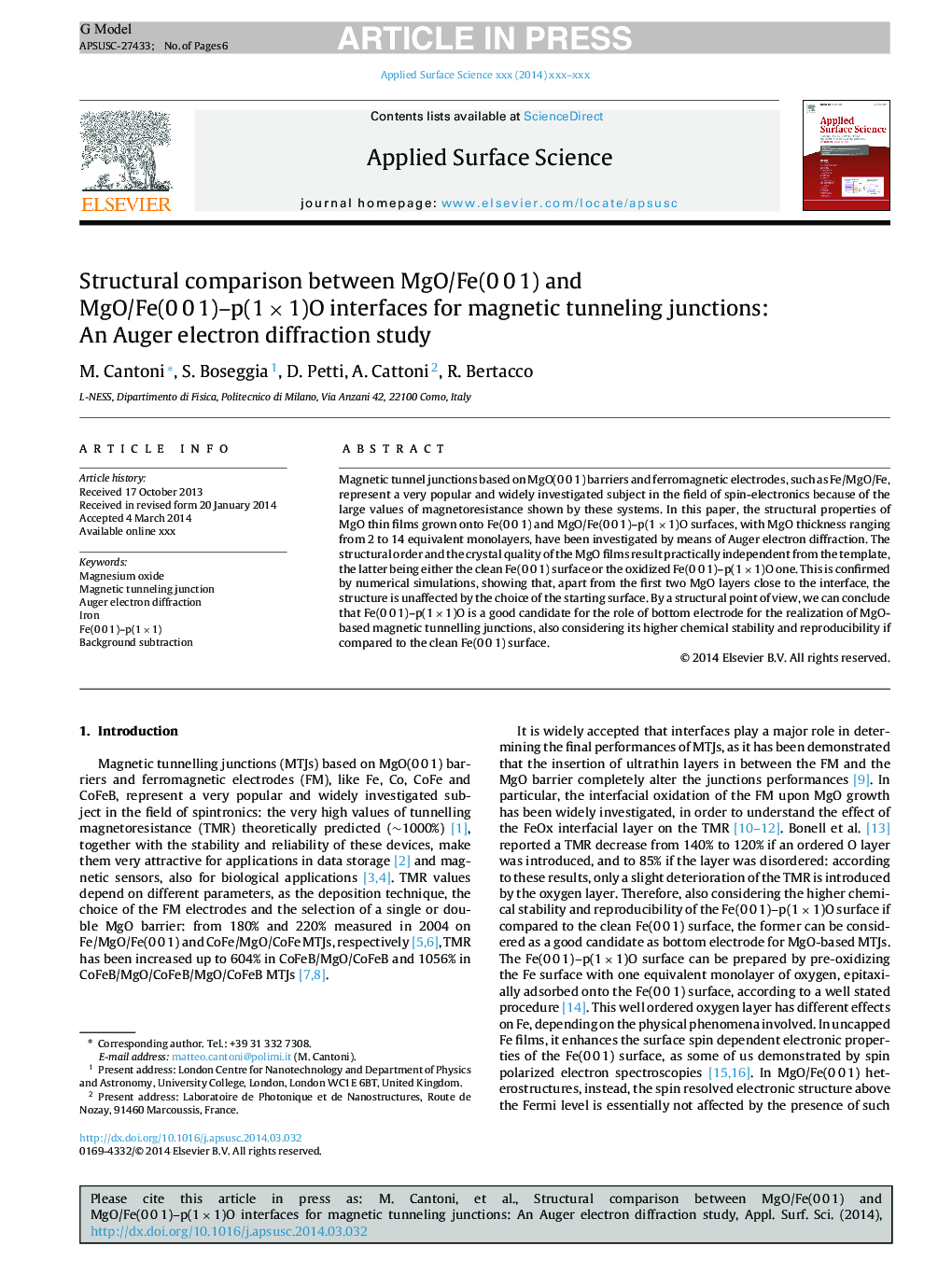| Article ID | Journal | Published Year | Pages | File Type |
|---|---|---|---|---|
| 5350284 | Applied Surface Science | 2014 | 6 Pages |
Abstract
Magnetic tunnel junctions based on MgO(0Â 0Â 1) barriers and ferromagnetic electrodes, such as Fe/MgO/Fe, represent a very popular and widely investigated subject in the field of spin-electronics because of the large values of magnetoresistance shown by these systems. In this paper, the structural properties of MgO thin films grown onto Fe(0Â 0Â 1) and MgO/Fe(0Â 0Â 1)-p(1Â ÃÂ 1)O surfaces, with MgO thickness ranging from 2 to 14 equivalent monolayers, have been investigated by means of Auger electron diffraction. The structural order and the crystal quality of the MgO films result practically independent from the template, the latter being either the clean Fe(0Â 0Â 1) surface or the oxidized Fe(0Â 0Â 1)-p(1Â ÃÂ 1)O one. This is confirmed by numerical simulations, showing that, apart from the first two MgO layers close to the interface, the structure is unaffected by the choice of the starting surface. By a structural point of view, we can conclude that Fe(0Â 0Â 1)-p(1Â ÃÂ 1)O is a good candidate for the role of bottom electrode for the realization of MgO-based magnetic tunnelling junctions, also considering its higher chemical stability and reproducibility if compared to the clean Fe(0Â 0Â 1) surface.
Keywords
Related Topics
Physical Sciences and Engineering
Chemistry
Physical and Theoretical Chemistry
Authors
M. Cantoni, S. Boseggia, D. Petti, A. Cattoni, R. Bertacco,
